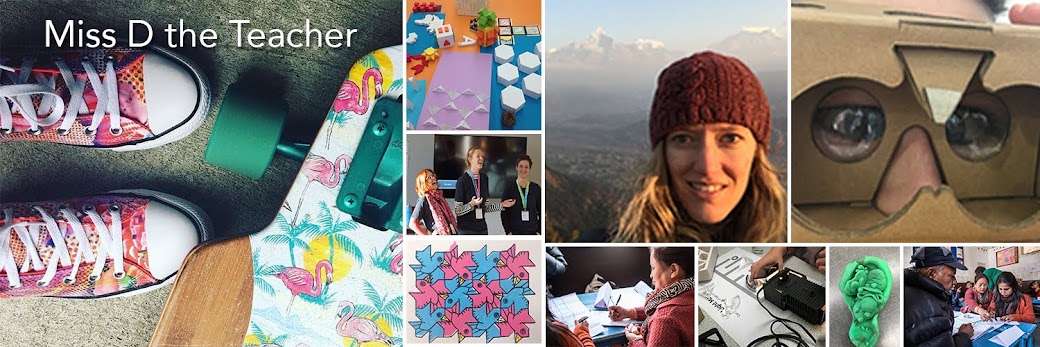Throughout the past three years, I have become reacquainted with the concept of diversity. I knew the definition of diversity, I knew that it was one of the major strands of the practicing teacher criteria. However, working at Hobsonville Point Secondary School has helped me convert my textbook understanding, to one of the heart. Not only do I now have a Pepeha that I have said proudly in front of hundreds of people, I genuinely know what it means and why I say it. And what's more, I want to say it, I don't just do it because I have to. That said, I am only at the start of this journey...
As well as cultural diversity, I have also developed a genuine appreciation for the role of diversity in other spaces too. Largely through my masters studies, I have become exposed to ideas such as those from David Weinberger in Too Big to Know: Rethinking Knowledge Now That the Facts Aren't the Facts, Experts Are Everywhere, and the Smartest Person in the Room Is the Room (I also had the awesome privilege of interviewing him earlier this year, see here).
They way I see it, there is so much knowledge in the world, (actually, I mean Knowledge with a capital K. I don't mean the meaningless shallow drivel or the endless information that clogs up the internet) that one person can not know it all. If we are dealing with complexity, uncertainty, volatility and so forth in our world, it becomes rather critical that we diversify because we don't know what knowledge, skills, expertise or capabilities we will need. Hence, making all learners learn the same thing seems silly, if not dangerous. It seems foolish removing all the redundancy from the system by making everyone learn the same thing and think in the same way? Hence, it becomes critical that we allow individuals to pursue their personal interests and passions. Perhaps we need to encourage diversity, not just acknowledge or manage it. This idea is also echoed in one of my current favourite readings from Keri Facer. Keri also argues for possibilities, rather than pushing all our students into STEM. Pushing all our students in one direction also removes redundancy from the system.
It was in 2014 that I read Key Competencies for the Future where I stumbled upon the idea of not just valuing diversity in the classroom, but rather making it a necessary component for success. This idea stuck and in 2016, it informed one of my professional learning goals for the year; How might I develop my and my students' capacity to leverage diversity for more effective problem solving? In 2016, I wanted to help my students view diversity as a critical resource, a strength. I wanted my students to seek out diversity rather than avoid it. I wanted them to recognise that there are challenges when working with diverse groups, but we learn to manage these in order to collaborate.
So what does this look like? A whole bunch of experiments really...
 |
| Winning groups. Visit Wendy's Supa Sundaes in January to try some of the products these students inspired! |
- In one of my classes, Yu Ting my co-teacher and I made the students write CVs. We then chose team leaders who were put in a separate room. They worked through the class CVs to pick their teams. Each team had to recruit a design officer, human relations manager and a finance officer. Each team also had to contain at least one boy and girl. The teams then had to design a product for Wendy's Supa Sundaes, design the marketing campaign and calculate food costs. They also had to present these ideas on the last day of term to the brand manager of Wendy's. This particular experiment culminated with Wendy's acknowledging the winning teams on stage last week. I was stoked, because the incredibly diverse range of students being acknowledged on stage was incredible. There were a number of students who I had never seen on stage before. Additionally, the products inspired by these students will be available across the country in January!
- In another module, I collaborated with Tome my co-teacher, and OnBoard Skate to run a
module called Heaven is a Halfpipe. Often in schools, we see the same students shinning in multiple contexts. This module however saw some new students step into the foreground. Many of our students who are sometimes disengaged were suddenly the stars in the class. It's amazing what a change in attitude happens when individuals feel valued and like they have something to contribute. It has really made me wonder about whether the disengaged students in our school systems really feel valued and like they have something to contribute.
Showing my growth mindset in action.
Learning to skate!
The thing with diversity however, is that I am only at the very beginning of this journey. I have found that more and more, I see how we unconsciously discriminate against diversity. Even in #edchatNZ, diversity topics are usually the ones not picked. At our most recent conference, it was the strand with the fewest workshops proposals submitted. Even school uniforms discourage diversity. They often blatantly suggests that students should leave their culture, personality and gender at the door. If we do not differentiate or personalise in our lessons, what implicit messages do we send about diversity?
I believe that a good professional learning goal should lead on to a few paradigm shifts, some good books, trying new and different practices in my teaching that improve outcomes for students, and should lead to me becoming more aware of all that I don't know. I think my goal this year has certainly ticked that box...
